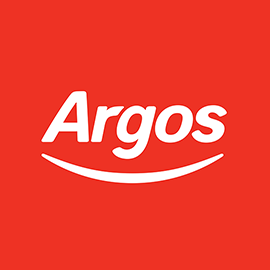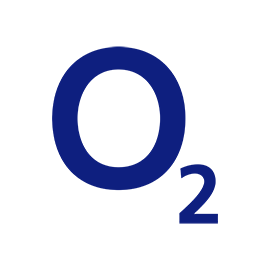PRICE WHEN REVIEWED
- $799
HTC U12 PLUS REVIEW
HTC is having a funny old time of it since Google nicked a load of its employees. Having made the Google Pixel, Pixel XL and Pixel 2 (but not the LG made 2 XL), you’d be forgiven for thinking there wouldn’t be another HTC flagship.
But the HTC U12 Plus is its high-end phone for 2018 – and the company is so convinced it’s a winner, there’s no regular model. It’s Plus or bust.
The phone looks quite a bit like the chunky U11 Plus, but with some decent upgrades, particularly in the camera. HTC has been treading water for a few years now and needs a hit, despite the strength of the U11 line.
But the U12 Plus is a buggy mess. It has bad battery life, unnecessary pressure sensitive buttons and bugs that make it infuriating to use. It might be the final nail in the coffin for HTC.
HTC U12 PLUS PRICE AND AVAILABILITY
At £699 in the UK, the U12 Plus will rattle around the high-end price bracket but is still less than some key rival devices. Samsung’s Galaxy S9 Plus costs an eye watering £869 while the Google Pixel 2 XL is £799.
At the same price as the Sony Xperia XZ2, hopefully it will get the operator support it needs to actually sell some units when it goes on sale. It’s available to pre-order now from HTC with the site stating ‘late June’ for shipments.
Of course, like every year, OnePlus has popped up to ruin everything by pricing its excellent OnePlus 6 from £469.

HTC U12 PLUS DESIGN AND BUILD
It’s always a good start when a phone is eye catching, and the HTC U12 Plus is that. Not quite in the same way recent Samsung Galaxy phones are, but the new colours had us swooning.
Continuing the glass design of the U11, there’s black (which isn’t really black), red (which turns gold) and a translucent blue that shows off some of the internals through the sturdy Gorilla Glass 5. All three colours shimmer and while they attract some fingerprint magnets they are certainly lust worthy.
Speaking of fingerprints, the sensor is on the back but the dual front cameras also allow for face unlock.
The design is a little straight laced though and the phone is a monolithic slab of heavy tech at 188g. While shiny on the back it’s great to see an oleophobic coating on it, which keeps fingerprints down compared to Samsung Galaxy phones but does make it slippy. There’s a snap-on plastic case in the box.

The phone is quite large and hard to hold with one hand much like the S9 Plus, but as the U12 Plus is noticeably thicker, you’re going to have to use two hands most of the time.
It helps to have a slightly protruding metal rim between the two glass halves as it helps you grip and hold onto the thing. Increasingly bezel-free phones can lack this, so it’s nice to see here.
The display is an 18:9 6in LCD and though a flat panel has one glass piece that impressively bends into the frame of the phone. Like LG with the G7 ThinQ, HTC is sticking to LCD, potentially to keep production costs down. Above that screen is the surprising addition of two front facing cameras – matching the two on the back.
All four cameras are flush to the casing (save for a millimetre rim on the rear) and their inclusion means you can take portrait photos or selfies.

Even more unique to the U12 Plus is that none of the buttons physically move. The power and volume keys are pressure sensitive and give you vibration feedback rather than actually moving, which supposedly helps with the waterproofing and means they can’t break like a mechanical button might.
It’s a step closer to phones being completely sealed units, though not quite – you still need the USB-C port for fast charging, but no wireless charging, despite the glass.
As we will get to in this review – the gamble has not paid off.
We are taken by the Flame Red that transitions from red to gold in the light. Ceramic Black shifts from black to silver, and the Translucent Blue is less jazzy and shows fewer fingerprints.
It’s a desirable phone, but it may prove too utilitarian for some, even in the red.

HTC U12 PLUS FEATURES AND SPECS
The design – if you like it – is excellent. But despite the high-end specs of the U12 Plus, it begins to disappoint once you actually use it.
Display
The tall 6in display is 18:9 Quad HD LCD with a resolution of 2880×1440. It’s a fine display with excellent touch response and colour reproduction, but it suffers in bright direct sunlight as LCDs tend to do. It’s nigh on impossible to read anything on the display without boosting the brightness to 100% in these instances, and it gets annoying.
It’s a completely flat display unlike the curved surfaces and rounded screen corners we’ve seen on other flagships this year. If you want a standard, rectangular display on a high-end phone, then the U12 Plus is appealing.
It’s good to see an always on display option, but be wary – because it’s an LCD panel, having this on all the time will drain the battery considerably. There’s an LED indicator light too, if that’s your thing.

Processor, memory and storage
The specs on show here are mouth-watering. The U12 Plus flies thanks to a Snapdragon 845, 6GB RAM and 64GB of expandable storage. It’s also dual SIM, but the SIM 2 space is taken up if you opt for a microSD card.
Performance is hard to fault. The phone is extremely fast and only feels ‘slower’ than the Pixel 2 and OnePlus 6 – and this is nit-picking. The fingerprint sensor is reliable and fast, but you can also use the front facing cameras for face unlock, which is also decent here.
Edge Sense
Oddly the phone’s most interesting interaction comes not from the touchscreen but the sides of the device. Like the U11’s Edge Sense and the Pixel 2, HTC has put pressure sensitive sides into the U12 Plus, calling it Edge Sense 2.
You can short or long squeeze to action anything you want (open the camera, start Google Assistant, etc.) or double tap with your thumb on either side to do something else, like go back, shrink the screen to one handed mode or open a wheel-style menu.
It’s good when it works, but Edge Sense 2 is not as reliable as the version on the U11. It’s really buggy, and half the times we triggered either function was by accident. And double tapping the side of a huge phone with one thumb in one hand is a precarious, annoying action. It’s easier to triple tap the home button – Android’s default option for one handed mode.

When you begin to squeeze the phone, a blue squeeze and dot graphic starts on the screen. It’s way too sensitive and even simply holding the phone can trigger it, covering your screen in blue when you aren’t about to use Edge Sense. It was enough for us to turn it off.
Compared to the U11 it’s harder to actually locate the right pressure points when you want to, as well as triggering it when you don’t want it. The pressure sensor on the left is longer and differently positioned to the one on the right. You definitely have to squeeze the phone harder than before, even when you can change the level of pressure needed.
The best feature here is in fact the least obvious. There’s a smart rotate option that senses you’re holding the phone in a certain way and doesn’t auto rotate the screen. It’s basically for if you are lying in bed with your phone – but it works well because it is a subtle feature that improves the user experience. It’s the only time here that Edge Sense is successful.
As well as Edge Sense, there are no physical buttons on the phone. The volume and power key are pressure sensitive – but buggy as hell. They work maybe 60% of the time, but that is far from good enough when they are the only option, and when HTC clearly thinks they are better than normal buttons (you can’t adjust the level of sensitivity, either).
Sometimes, merely accidentally brushing the power button registered a lock when other times pressing it as hard as possible does nothing. These buttons are not necessary as waterproofing is possible without them – HTC claims it’s to stop physical buttons breaking. Fine, but when they these ones are basically broken out of the box, this assertion is DOA.
It’s worth noting that these problems occurred on two separate loan devices – the second given to try and rectify the problems of the first.

Edge Sense on the U12 Plus managed, in our two-week testing of the phone, to drive us insane to the point of not wanting to use the phone. Turning off Edge Sense goes some way to solving the maddening problem, but who wants to turn off the headline feature of their brand new £700 phone?
Audio
The volume up button proved troublesome, and weirdly frequently did not work when it was in our pocket. The inline control on the headphones doesn’t have volume controls, only play/pause which itself worked intermittently – and, a real kicker, there’s no 3.5mm headphone jackdongle in the box. It sucks that HTC doesn’t include one with its £700 phone – Apple, Google and Huawei all do.
Luckily the bundled in-ear USonic headphones are quite good and have noise cancellation. But if you want to use your own headphones, you’ll have to buy an HTC adapter or use Bluetooth headphones. In our tests the USonic buds also don’t work with any other USB-C device we tried them with.
The dual speakers on the U12 Plus are decent, continuing HTC’s good track record. You can switch between music mode and the booming theatre mode. These are some of the best smartphone speakers out there.
Cameras
Using the U12 Plus annoyed us to the point of distraction but is saved from the brink by its cameras. It’s one of the only parts of the phone that continues the good work on the U11 and improves it.
The dual cameras are the first on an HTC for ages, and they are very good. We are talking nearly-Pixel 2 levels of excellence here, which is no mean feat. The U12 Plus is slightly worse off in low light though, particularly to the Pixel and the Huawei P20 Pro.

The U12 Plus having dual cameras is very 2018, and the rear cameras are 12Mp (with OIS) and 16Mp (telephoto) with an impressive zoom that takes full advantage of the hardware. HTC is keen to highlight the video capabilities of the U12 Plus and like on the LG V30 there are some decent features like zoom tracking that will zoom in or out automatically on a subject, and even hone in on the audio of a selected subject.
In in daylight, dusk, zoom and portrait modes in particular the results are awesome. Check out the shots from the phone in the below gallery:

The U12 Plus does not overly saturate in post processing, in fact even less so than Google does, and HDR does a good job of keeping colours naturalistic. They all look great on the display, too.
But despite the main sensor’s f/1.75 aperture, low light photos indoors are grainy in places and are overly brightened by the processing. The lenses fare better in outdoor low light.
You’ll can record in 4K with OIS (important plus) at 30 and 60fps, and stabilisation is excellent. There’s also the option for slo-mo at 240fps with no length limit so you can muck about with that to your heart’s content.
The camera app is clean and easy to navigate around despite the tons of options available to you. But it is a little laggy and slow to react at times, which is frustrating.
Battery life
Rounding up the U12 Plus package is IP68 water resistance, a 3,500mAh Quick Charge 4 compatible battery (but only a QC3 charger in the box), and no wireless charging.
But battery life is woefully under par on both the review units we tested. Apart from battery life being usually bad (sometimes less than two hours screen-on time), it was also wildly inconsistent.
Some days we would get home at 8pm on 15%, other it was nearer to 35%. On holiday in Budapest, we did not have any confidence whatsoever that the U12 Plus would last a day.
Even with 12 hours off charge and using the standard battery saver mode, the phone died. With the supposed improved efficiencies of the Snapdragon 845 and 3,500mAh on board, this is very disappointing.
For context, we haven’t experienced such battery concerns with any other flagship in 2018. Battery life, Edge Sense and the buttons ruin the U12 Plus, while only the general performance and cameras shine.
HTC U12 PLUS SOFTWARE
HTC’s Sense software has been its strength for years given it doesn’t change stock Android too much, but it’s now a mixed bag. There are visual differences in menus and fonts are different throughout the OS. It’s pleasingly customisable, and the additions you’ll find on the U12 Plus are mainly associated with Edge Sense functions or audio set up.

HTC lets you be as plain as you want with its software, or you can customise it to within an inch of its life. The company expects you to do the latter, and the U12 Plus still feels like an enthusiasts’ device more than a mass market option like the Galaxy S9.
It’s also only on Android 8.0, and so you lose handy features like better inline notification actions seen in 8.1. HTC Sense in 2018 is blocky and, basically, very unchanged from even the HTC One M8 from 2014 – imagine if Samsung still used similar software design from 2014’s Galaxy S5! The dialler, contacts and clock apps are all fluro and old, and it’s crazy that HTC hasn’t done anything to update them.
The U12 Plus’ software does not feel very 2018, and it’s visually lagging behind basically every major competitor – it’s a big deal, and it makes us want to use the phone less when it doesn’t feel new or of flagship expense.
Swiping right on the home screen takes you to Blinkfeed, not Google, and that’s a bad thing. Blinkfeed is a stodgy mess of irrelevant information that’s hard to take in, even if you link your social accounts.
It even served us ads to buy the U12 Plus, the phone we were holding, and even the ‘brand new U11’ – last year’s flagship. It’s terrible.
There’s also HTC’s largely annoying Sense Companion (mercifully optional) that pops up occasionally to tell you there’s a Turkish restaurant nearby or that you’ve just walked three miles. Like Edge Sense, we turned it off.
SPECS
HTC U12+: Specs
- Android 8.1 Oreo
- 6in Quad HD LCD
- Qualcomm Snapdragon 845
- 6GB RAM
- 12Mp main + 16Mp telephoto dual cameras, 4K video at 60fps
- OIS/EIS
- 8Mp dual front cameras
- 802.11ac dual-band Wi-Fi
- Bluetooth 5.0
- 4G LTE
- GPS
- NFC
- 3500mAh battery
- IP68 water resistant
SHOULD I BUY HTC U12+?
The HTC U12 Plus simply isn’t good enough – even for HTC die-hards, we fear. Cameras and hardware design aside, we are so disappointed in this phone.
Erratic battery life, aging software design and terrible pressure sensitive buttons mar the experience from the moment you turn it on.
Add to that the fact Edge Sense is worse than it was on the U11 and you are faced with a phone that we struggle to recommend. Yet the cameras are up there with the best smartphones have to offer in 2018, making this a supremely frustrating phone.
If you love the design and the software quirks and want a smartphone camera that excels while costing less than the Pixel 2 XL and Huawei P20 Pro, then this could be a phone to consider. But ultimately there are simply better – and cheaper – high-end phones to choose from.
Source: techadvisor.co.uk












































